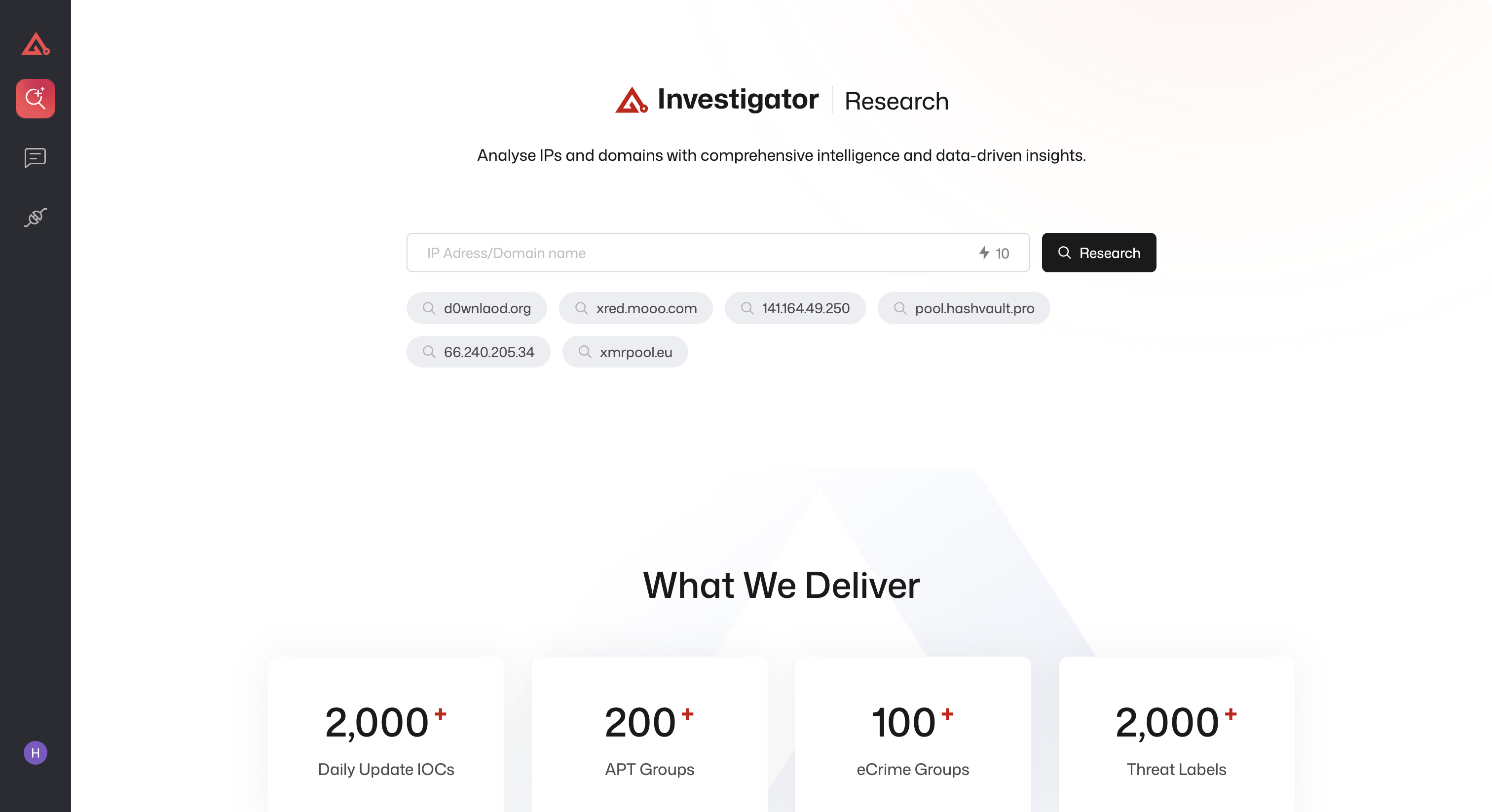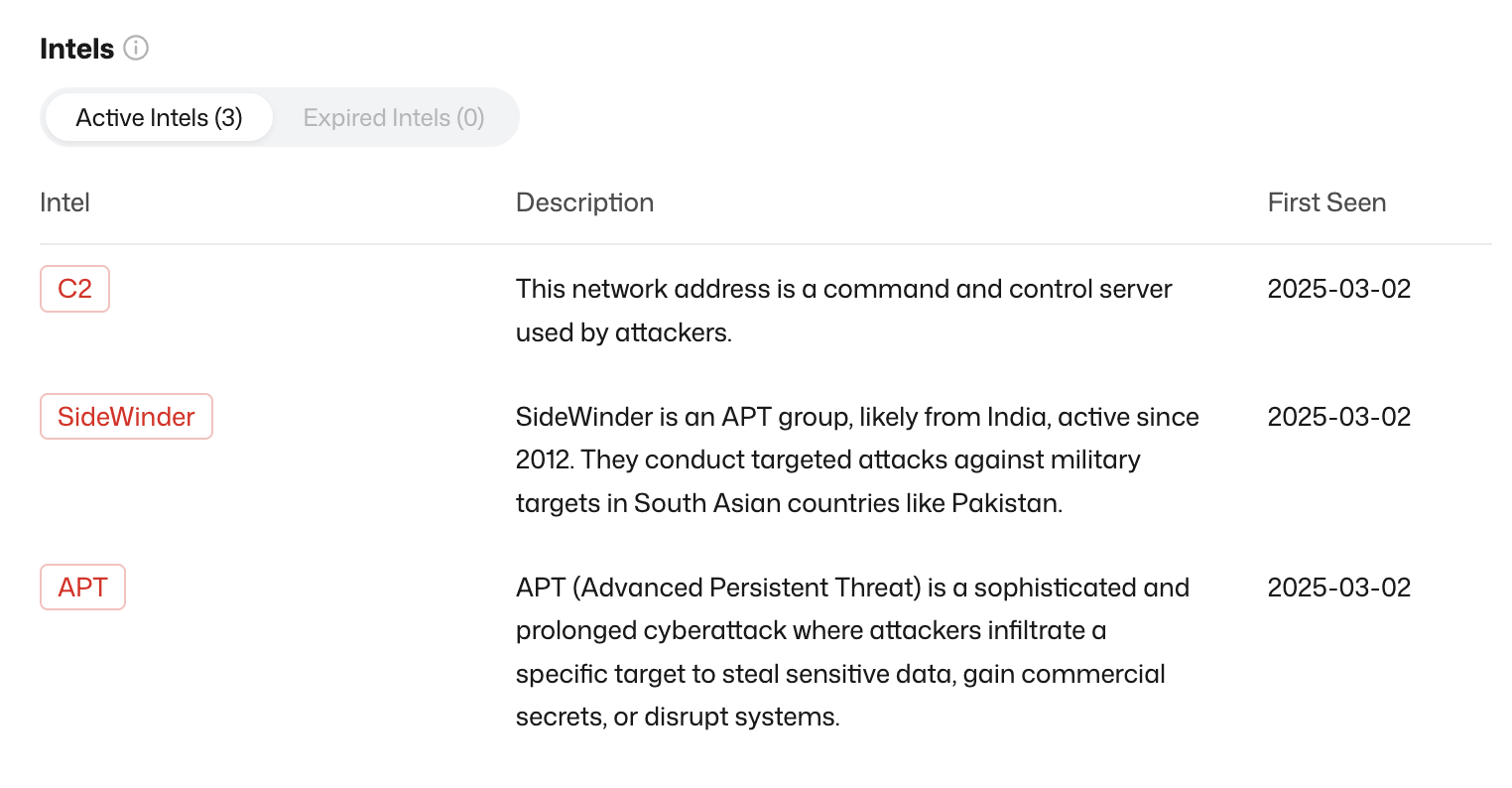Skip to main contentThe SecAI Research module provides a platform for querying and analyzing IP and domain intelligence. Users can retrieve information such as verdicts, threat labels, historical activity, and various metadata related to an address.
How to Use?
1. Searching for an IP or Domain
- Enter an IP address or domain in the search bar.
- Click Search to view the intelligence results.
- The results include verdicts, tags, Whois, attack history, passive DNS, certificates, and more.

2. Get Instant Threat Verdicts
Each queried IP or domain receives a verdict indicating its security status:
- Malicious – Associated with known threats or attacks.
- Suspicious – Exhibits behavior that may indicate risk.
- Benign – No detected malicious activity.
- Unknown – Insufficient data available.
The verdict is determined based on rule-based detection.
 Also, SecAI integrates well-known external intelligence providers to enhance accuracy like VirusTotal, Greynoise and urlscan, etc. Users can configure third-party API keys in the Integration settings to unlock additional verdicts and enrich their analysis with external intelligence sources.
Also, SecAI integrates well-known external intelligence providers to enhance accuracy like VirusTotal, Greynoise and urlscan, etc. Users can configure third-party API keys in the Integration settings to unlock additional verdicts and enrich their analysis with external intelligence sources.
3.Investigate with Threat Intelligence Labels
Each IP or domain comes with automated intelligence labels that categorize its risk profile.Including but not limited to the following categories:
- Threat Attribution: Identifies links to APT groups, botnets, or malware campaigns.
- Infrastructure Role: Determines whether the entity is a C2 server, proxy, VPN, or residential IP.
- Behavioral Insights: Detects use in phishing, DDoS attacks, or credential stuffing operations.
These tags help you quickly assess risk and determine next steps.

4. Multi-Dimensional Data
SecAI aggregates intelligence data to provide a comprehensive view of an address. The available data includes, but is not limited to:
- Whois & Registration History – Domain ownership and changes over time.
- Passive DNS (pDNS) – Historical DNS resolutions linking domains and IPs.
- Certificate – SSL/TLS certificate relationships.
- Port Scans & Service Banners – Information from global scanning data.
- Related Malware Files – Identified threats communicating with the address.
- Historical Activity – Previously observed attack methods, targeted ports/services, and connections to other infrastructure.
- Web Search Results – Extracted data from indexed webpages associated with the address.
This information allows for deeper analysis and correlation across different data points.
Accessing Research Data
Currently, SecAI Research is accessible through:
- Web Interface – Users can perform manual searches via the platform.
- API Integration (Coming Soon) – Support for automated queries.
- Feeds (Coming Soon) – Continuous intelligence updates for external integration.
These options provide flexibility in how intelligence is accessed and utilized.
Get Started with SecAI Research
Start searching now at https://i.secai.ai/research .
For additional details, please contact us. 
 Also, SecAI integrates well-known external intelligence providers to enhance accuracy like VirusTotal, Greynoise and urlscan, etc. Users can configure third-party API keys in the Integration settings to unlock additional verdicts and enrich their analysis with external intelligence sources.
Also, SecAI integrates well-known external intelligence providers to enhance accuracy like VirusTotal, Greynoise and urlscan, etc. Users can configure third-party API keys in the Integration settings to unlock additional verdicts and enrich their analysis with external intelligence sources.


